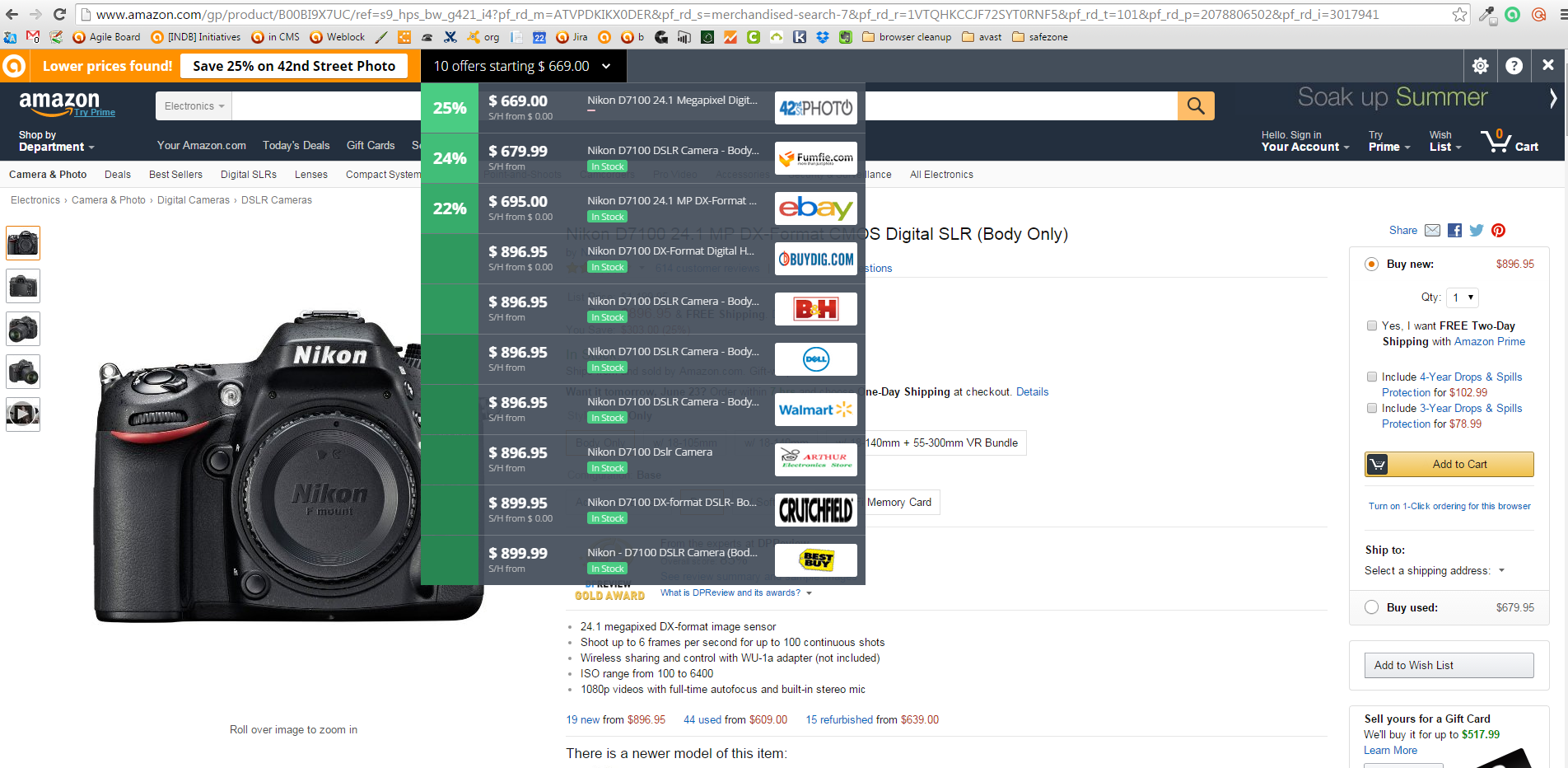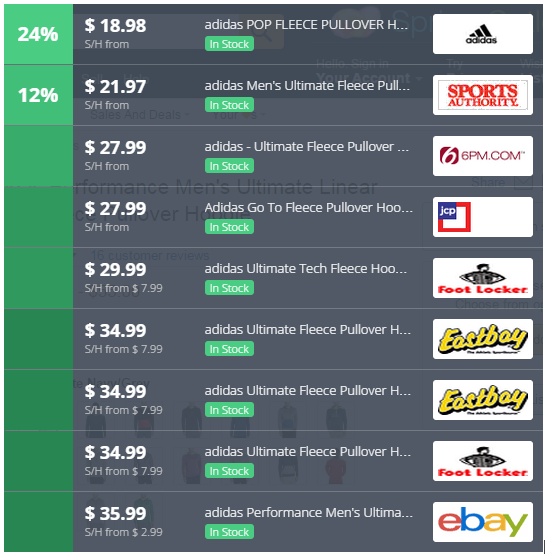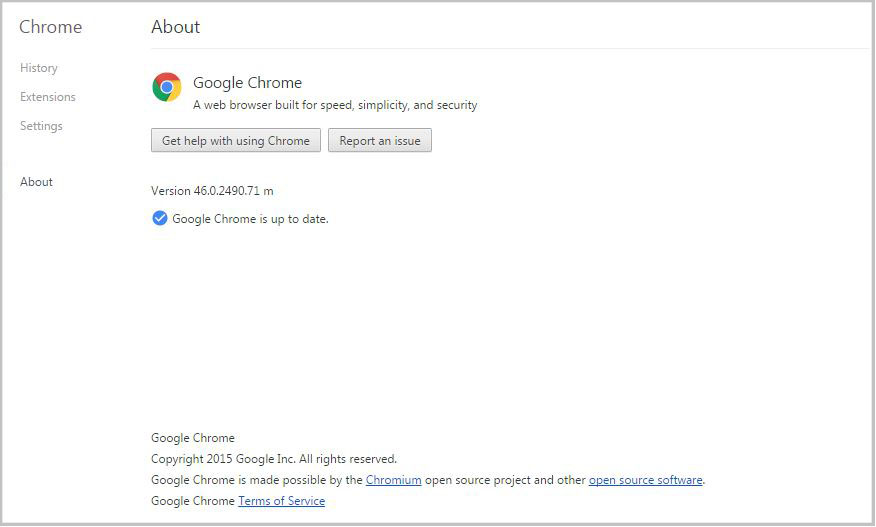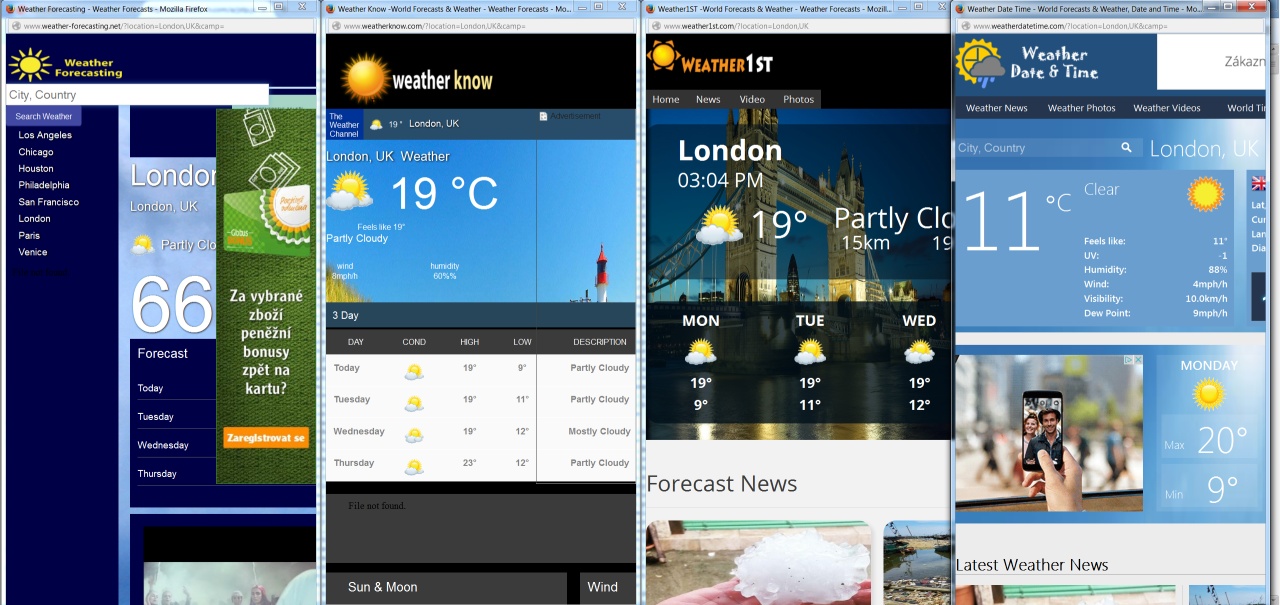Yes, it really is time to patch your computer again. Are you ready for life without Flash?
The post Jumping Jack FLASH, It’s Patch Day! appeared first on Avira Blog.
Yes, it really is time to patch your computer again. Are you ready for life without Flash?
The post Jumping Jack FLASH, It’s Patch Day! appeared first on Avira Blog.
The holiday shopping season is upon us and shoppers are flocking to the Web to find online deals and coupons. Shopping extensions for your web browser can help you find the best prices, but how do you know you are finding a great deal from a SAFE and trusted retailer?
There are several shopping tools that can help you find the lowest price from around the web, but I’ll start with the one that finds low prices and guarantees the safety and integrity of the online shop – Avast’s very own SafePrice.

Instead of visiting price comparison sites first, all you do is go to your favorite online store and pick out what you want to buy. SafePrice checks the price against thousands of verified stores, then displays the best deals and coupons at the very top of your browser. The bar is invisible when you’re not shopping.
Avast users already have SafePrice installed. If you are not an Avast user, but wnat to use it to find trusted stores, then add the extension to Chrome from the Chrome Web Store.
 Here’s what SafePrice does:
Here’s what SafePrice does:
SafePrice will never compromise your privacy. The specific products you are searching for and the URLs of the shopping sites you visit are communicated to our server. All personally identifiable information is stripped from this data in real time, so that the data that comes into our servers is completely anonymous.
InvisibleHand
InvisibleHand discreetly notifies you if the product you’re shopping for is available more cheaply from another retailer or travel site. It also shows you deals on hotels, rental-cars, and flights. Available for Chrome and Firefox.
Honey
Click on the Honey ‘Find Savings’ button during checkout and Honey will automatically apply coupon codes to your shopping cart. Available for Chrome and Firefox.
The Camelizer
For power-shoppers, this extension lets you track product price history information for items on Amazon, Best Buy, and Newegg. If you don’t need to buy the item now, you can sign up for price drop alerts via email or Twitter. Available for Chrome and Firefox.
RetailMeNot Coupons
For those who want to shop from their Android device (last year 53% of us did!), you can install RetailMeNot and search for the top deals and coupons from over 50,000 retailers.
Read our tips for safe shopping online.
Follow Avast on Facebook, Twitter, YouTube, and Google+ where we keep you updated on cybersecurity news every day.
![]()
Sometimes you can run into issues when using Chromium or Avira Scout, which is based on Chromium. Read on to learn about some solutions to several of these issues.
The post Avira Scout/Chromium: Tips and Tricks appeared first on Avira Blog.

Another day, another malware to tackle. It seems that hackers are churning out new ways to trick us on a weekly basis as security researchers have uncovered the latest threat to Internet users. Despite the likes of Google strengthening its security to combat these attacks, the culprits are continuously changing and adapting, and this latest adware has the potential to lead to serious privacy issues and even identity theft.
Named eFast Browser, this new adware seemingly works in the same way as many similar adwares that we’ve seen in the past – it bombards your browser with annoying pop-ups and redirects you to unwanted websites, while tracking your every move online, allowing more frustrating advertisements to be sent your way. What makes eFast Browser unique, however, is that unlike previous adwares which looked to take over your current browser, it actively sets out to replace your browser by deleting Chrome and taking its place. In doing so, it hijacks as many links and file associations as possible and features an icon that bears more than a passing resemblance to the Chrome icon.
The software comes from a company calling itself Clara Labs, which is also behind other similar browsers such as BoBrowser, Tortuga, and Unico. All claim to be legitimate and improve the Internet browsing experience yet none provide the functionality promised. The developers state that eFast Browser is a legitimate chromium-based web browser that largely improves the Internet browsing experience by generating the most relevant search results, displaying special deals or discounts available on shopping websites, etc. However, users need to be aware that adware-type applications such as eFast Browser are solely designed to generate revenue for the developers with little care for the user experience.

The most worrying aspect of this malicious adware is that it gathers information on your browsing which it then shares with third parties. The data that it gathers has the potential to be personally identifiable which, in turn, could lead to problems such as identity theft.
According to PCrisk, the adware tries to get on your computer by burrowing itself into the installers for free software from dubious sources on the web. The experts recommend a two-step process to avoid accidentally installing eFast Browser and other potentially unwanted programs (PUPs) on your computer. You should “never rush when downloading and installing software – use the ‘Custom’ or ‘Advanced’ settings and closely analyze all steps. Furthermore, all additionally-included applications should be cancelled, since bundled software is often classed as rogue, and thus, should never be installed.”
As always, when you are using the Internet it pays to be cautious. By following a few simple steps you can be assured that your online experience won’t turn out to be a frightening one. Cybercriminals are lurking in every part of the web, so always keep your eyes peeled!
The post How to avoid Efast Browser, the latest adware to hit Chrome appeared first on MediaCenter Panda Security.

Is something not right with your browser, but you can’t quite figure out what?
Here’s another reason to slow down when installing software, especially free software. A new Potentially Unwanted Program (PUP) disguised as the Google Chrome browser is sneaking onto users computers bundled with legitimate software, hidden deep within the ‘Custom’ or ‘Advanced’ settings that most people skip over. Once installed, eFast, as it has been called, serves up ads and tracks your online activities and sells personally identifiable information to advertisers.
“Read the installer screens to make sure what they actually install,” warns Michal Salat, researcher in the Avast Virus Lab. ” The Next->Next->Next->Done approach is exactly why we deal with PUPs daily. If there isn’t an option not to install some additional software, terminate the installer immediately. Better safe then sorry.”
Researchers at Malwarebytes says that eFast actually installs a new browser rather than hijacking your existing one. If you already have Chrome installed, it will replace it making itself the default browser. The fake browser uses the same source code for the user interface as the real thing making it difficult to tell the difference. It is so tricky that it even replaces shortcuts on your desktop that look similar to Google Chrome.
In addition to all that, eFast hijacks some file associations, so that it can open as many times as possible therefore having the opportunity to show you more ads! If you open a file like JPEG, PDF, or PNG, it will be opened with eFast, resulting in pop-ups, more ads in your searches, and other adware. You can see the list of file associations on Malwarebytes security blog.
Open your browser and type in chrome://chrome. The authentic Chrome browser will take you to the ‘About’ section and check if your browser software is up-to-date. It looks like this.

If you have a fake version of Chrome, then you will be taken to a fake About page, get an error, or the link won’t work. In that case, check out the removal instructions on PCrisk.
eFast is classified as a Potentially Unwanted Program, also known as a PUP. PUPs are annoyances like search bars, intrusive adware, etc. that Avast does not detect by default. However, the option can be enabled.
Follow Avast on Facebook, Twitter, YouTube, and Google+ where we keep you updated on cybersecurity news every day.
![]()
Despite blocking efforts, online advertising is a daily part of our lives. Most of us get used to the large volume of adverts displayed daily, but authors of malicious code are trying to push the limits much further nowadays via advert-injection techniques used in malware threats.
In this post, we present a case study of one such malware that we detected via our AVG Identity Protection (IDP) component. Based on our telemetry, this infection is highly active and it is reaching its maximal peak. The most affected countries are the United States and Germany, followed by Saudi Arabia and the United Arab Emirates.

The user infection starts while installing an application proclaimed by its authors as a “Weather Forecast Application”. However, once installed, this application silently downloads and installs other components that are purely malicious – this threat tries to infect all installed browsers and inject additional adverts in browser pages. It also periodically loads sets of adverts in the background without user notification. As a side-effect, it sacrifices security and performance of the infected systems for the purpose of making money via ad providers.


Details about this threat are described in the following technical analysis.
You can also download the report now.
AVG customers are protected against this threat via our multi-level protection in AVG Internet Security. If you’re not protected, you might want to check your systems using the indicators of compromise (IOC) listed in the aforementioned technical analysis.
![]()
![]()
… and congratulate the Browser Name Contest winners!
The post Please Welcome Avira Scout … appeared first on Avira Blog.
Steve Jobs killed Flash on the IPhone. Flash is a way of viewing videos in the internet – and a top 10 way of getting infected with malware. It is old technology. HTML5, CSS and Javascript are replacing it. The internet is changing. But sadly some of the older web pages still use the old technology instead of switching.
The post Avira Secure Browser: Breaking some eggs appeared first on Avira Blog.
Do you know what a drive-by exploit is and how it works? Read on to find out – and afterwards you maybe even want to help us with a browser experiment!
The post Our Browser, Drive-By Exploits And an Experiment appeared first on Avira Blog.
Remember the little contest we started some time ago concerning our new browser name? While we are not ready to announce the winners yet (we take the search for the right browser name very serious. Finding and going through the different candidates takes a lot of time, as does the involved research), I’m sure you are more than happy to get a sneak peak, right?
The post The Struggle For the Right Browser Name appeared first on Avira Blog.